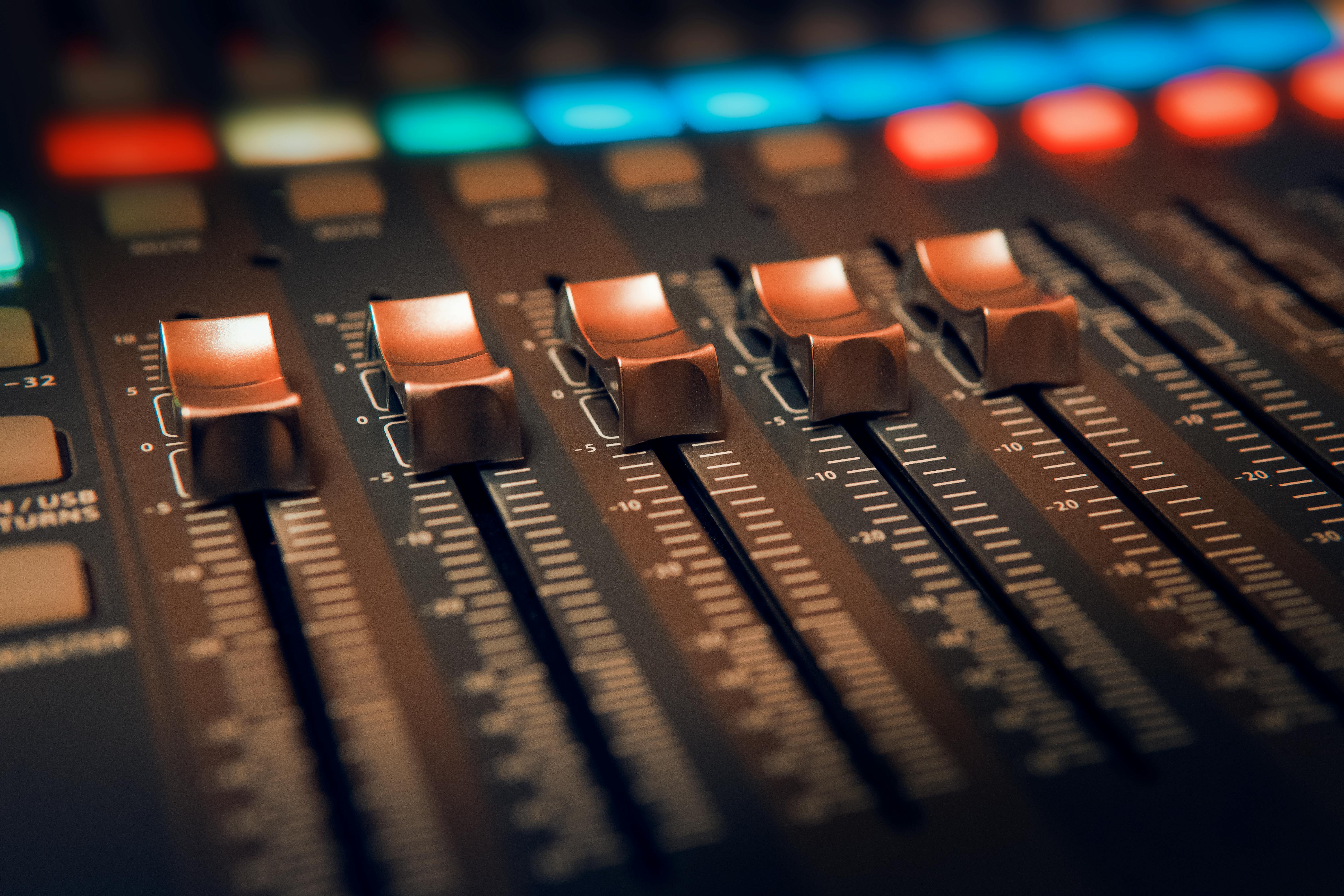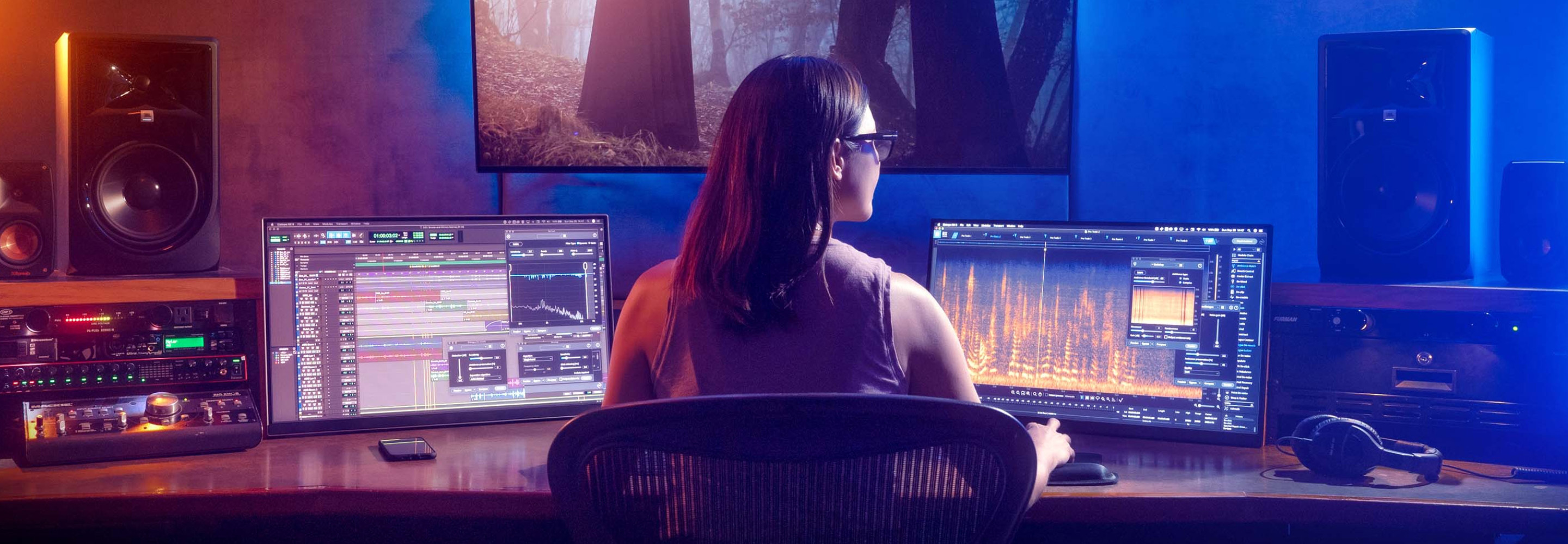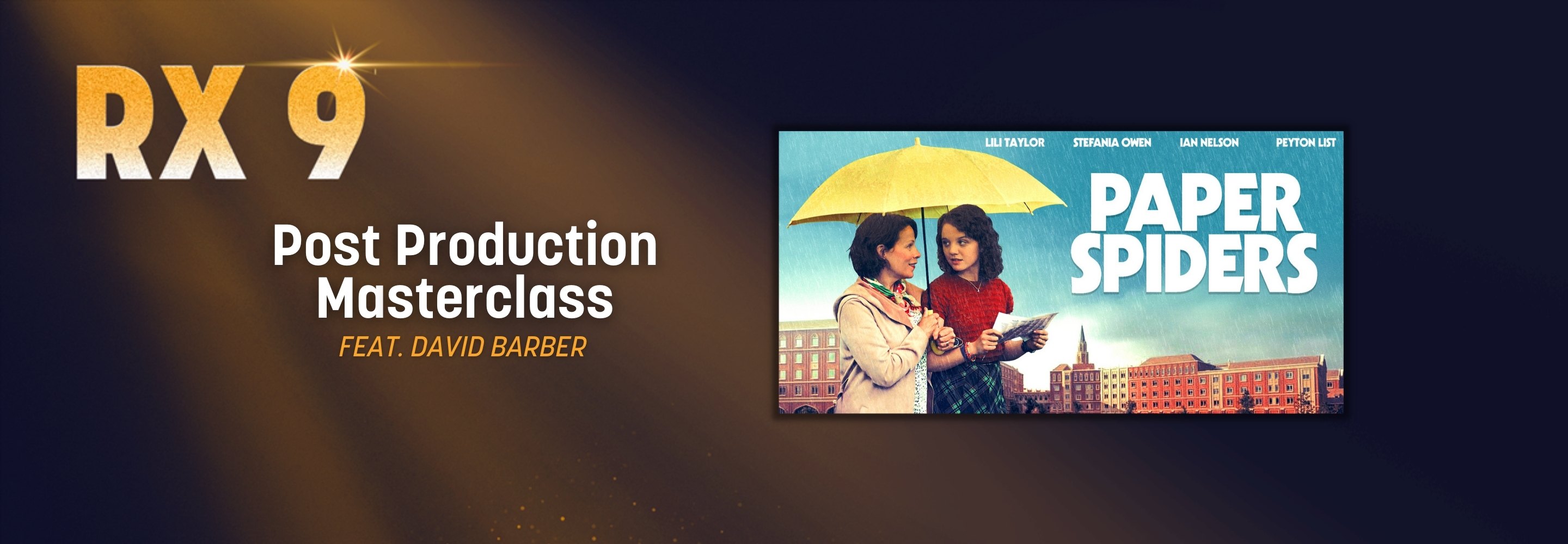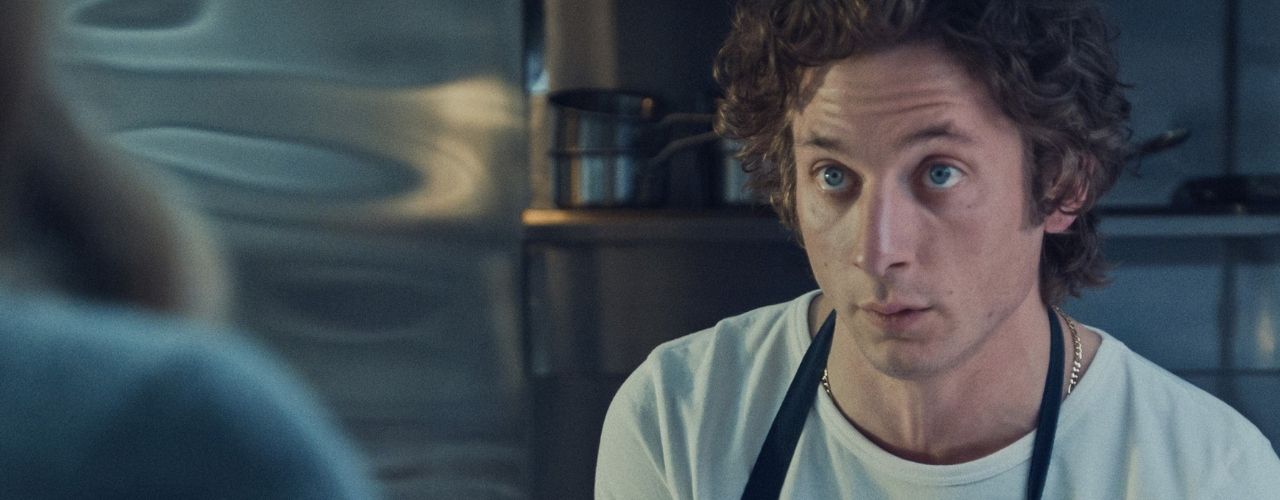
The secret sauce: crafting the audio of The Bear with the Emmy-winning sound team
Go behind the scenes with the sound team of The Bear to discover how they craft the show's intense auditory world using tools like iZotope RX.
The chaotic yet captivating sonic landscape of The Bear is as much a character as the chefs themselves. From the clatter of pans to the rapid-fire dialogue, the show immerses viewers in the high-pressure world of a professional kitchen.
We sat down with the talented sound team behind The Bear – Supervising Sound Editor and Re-recording Mixer Steve "Major" Giammaria, Dialogue Editor Evan Benjamin, and Production Sound Mixer Scott D. Smith – to explore their philosophy, challenges, and the tools they use to craft the show's auditory experience.
Could you tell us a little bit about your roles in creating the sounds of the restaurant and the world of The Bear?
Major: I have two roles on The Bear, supervising sound editor and re-recording mixer. As the supervising sound editor, I work with the team to set the overall tone of the show's sound and ensure I have the necessary material for the mix stage. As the mixer, I blend the brilliant sound editorial work, production sound, and music to support and tell an exciting story. Ultimately, it's about supporting the showrunner's creative vision and telling a story that moves the audience.

Evan Benjamin, Steve Giammaria, and Scott D. Smith
Evan: I'm the dialogue editor for The Bear. My job is to take the vast amount of material Scott records on set from many mics and multiple takes and turn it into a cohesive, seamless-sounding scene. This also provides maximum flexibility for Major when he mixes it.
Scott: The primary role of the production sound team is to capture as much clean dialogue as possible, along with any related sound effects and ambiance specific to a scene that would be hard to recreate later.
What is your philosophy or guiding principles for crafting the sonic world of The Bear?
Major: For me, it's always dialogue first. We strive to make sure every word, even with a lot of overlapping dialogue, is heard and understood in that rapid-fire environment. The audience needs to track the story amidst the chaos. We also subtly support the scene's emotion by adding or subtracting certain sounds. For instance, do we increase the fork clinks in a tense moment, or let a scene breathe in the alley after a long night of service? How do we show a character's growth through sound?
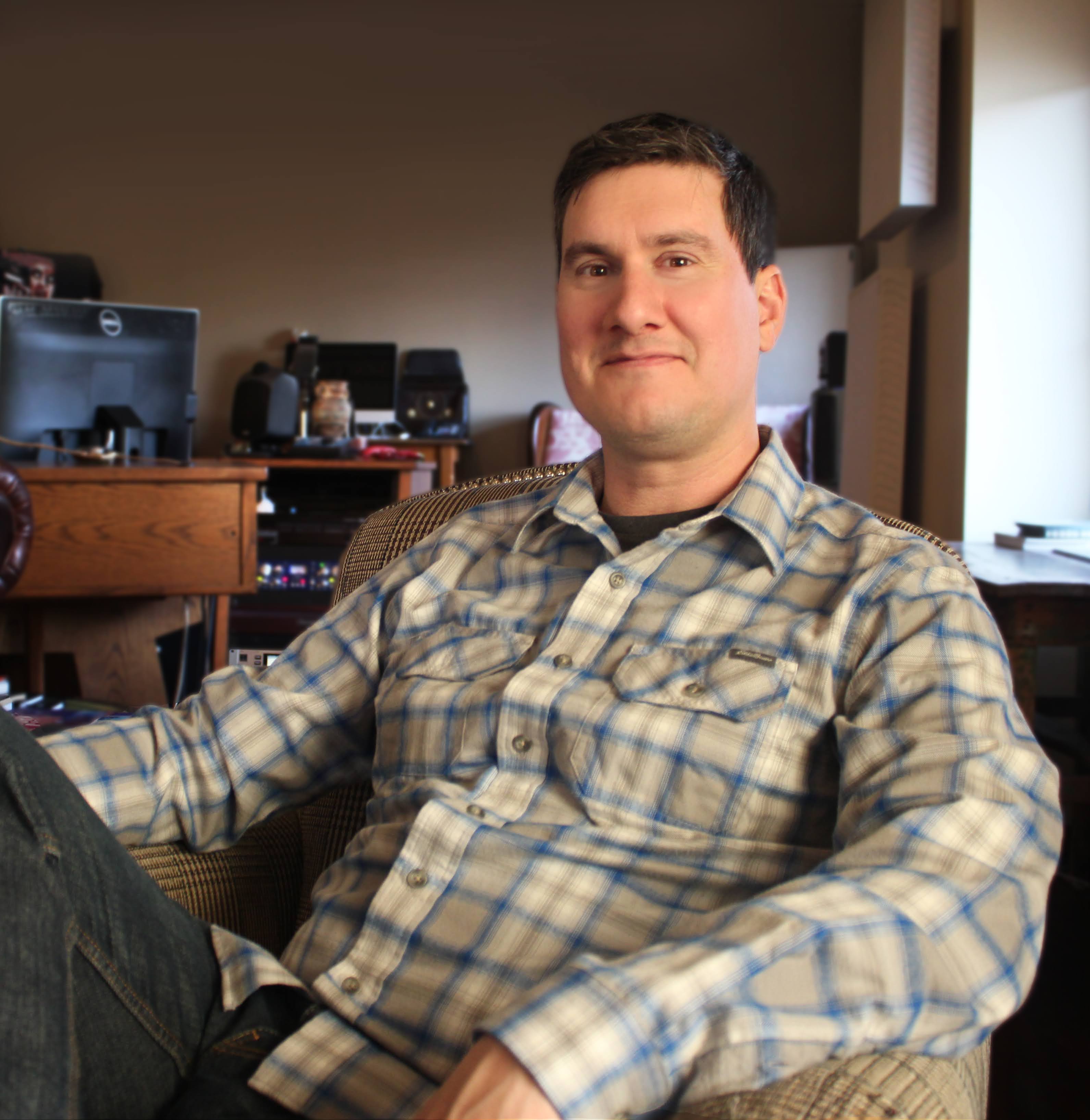
Steve “Major” Giammaria
Evan: Technically, before I hand off a scene to Major, I want it to play as if it was shot in one take with one mic, regardless of how many pieces it's built from. Creatively, I aim for the most natural sound possible, using processing without it ever being apparent or intrusive. I want the actors' performances to remain unaffected, even by extreme processing. My goal is to save as many lines as possible from needing to be ADR'd. When actors yell over each other, I want all of them audible and independently controllable. To achieve this, iZotope RX has been an invaluable part of my work on The Bear since season 1.
Scott: I strive to create a sonic landscape that conveys the acoustics of the space a scene takes place in. If a scene is in a cavernous space, it should sound cavernous, not antiseptic. I also do whatever possible to match the sound to what the camera sees, typically using boom mics instead of lavalier mics on the actors. Additionally, I like to capture stereo ambience tracks for the surround channels in the final mix to further establish the environment.
Can you give an example of a particularly memorable or challenging scene from The Bear, and how the team collectively approached it?
Major: Season 3, Episode 3, "Doors," basically has two scenes. The first is a delicate scene of Marcus eulogizing his mother. Restraint in cleaning up the production sound by Evan was essential. Luckily, Scott captured great audio directly from the podium mic on camera.
Sometimes the softer, calmer, quieter scenes are harder because there’s nowhere to hide. Picture editor Adam Epstein calls it “high quality silence,” a term I love. It’s quiet, but if you listen closely, there’s so much going on to give the silence depth and realism – bench creaks, coughs, paper shuffling, cars two blocks away. Nothing stands out, but together they create a delicious auditory soup for the dialogue to sit in.
The rest of the episode is a month of slogging through service set to classical music – intense monotony. The delicate balance from moment to moment between dialogue, music, and effects was a tricky line to walk, but I'm very proud of how the episode turned out. This was a real team effort with three effects editors (Jon Fuhrer, Matt Snedecor, Craig LoGiudice) working on it in different stages.
Scott: "Doors" had some specific challenges regarding separating the primary on-camera dialogue from the off-camera dialogue and sound effects. However, the director wanted the scene to be as real as possible, so there are segments where all the elements that might traditionally be treated separately are happening together. This creates a real challenge in post-production, trading pristine tracks for believable performances by the actors.
Evan: As an example of a quiet scene that was quite difficult to fix, Richie’s scene with his daughter Eva in season 3, episode 4 was full of dolly creaks. It’s very difficult to do ADR with a young actor, and there were few alternate takes available. So my goal was to save the original.
With RX, I was able to draw out many of the dolly creaks that were over lines of dialogue. This is an example of something quiet that can be easily ruined by extraneous noise because there’s no music or noticeable effects to help cover up any flaws in production. Yet, it’s a beautiful and delicate moment where every breath of the actors needs to be heard.
RX helped me save the entire scene.
In the first season, there’s a funny bit with Carmy and Richie fighting over an inflatable hot dog they’re trying to stuff into a car. All we had were the lavs, and they had a terrible amount of rubbing over the lines. RX De-crackle and De-click were vital in making those lines usable.
What does the feedback process look like within the sound team and with the showrunners/director? How do you ensure everyone is on the same page regarding the evolving mix?
Major: We have an asynchronous workflow that was born out of the aftermath of COVID, but we stuck with it after season one because it just worked. We start with a spotting session with the picture editors and post producer. They have the ear of the showrunner and have the sound pretty well temped out already.
Now, wrapping up season four, we have a pretty good shorthand going, but we still talk through every episode. Then our editors work for about a week, we shoot Foley and ADR, and then I mix it for two days. After that, we post for the picture department on Frame.io and have several rounds of notes. Once we’re confident, we send it to the showrunner and EPs for their final notes and ship it! It’s a very whirlwind process, but it makes you have to trust your instincts!
Scott: As much as possible, we try to anticipate what might occur in a scene since there are few, if any, rehearsals beyond rudimentary blocking. If there are issues with action or noises on or off camera, we strive to minimize their impact on the principal dialogue. We also try to capture any additional effects and background tracks specific to a scene, such as background walls at a party.
Furthermore, if there are possibilities for changing a shot to enable us to place a microphone where it is needed, we may occasionally ask the director to change the camera setup if it means the difference between having to entirely ADR a scene or not.

Scott D. Smith
Being able to ‘fix it in post’ can be a blessing and a curse. How does understanding the capabilities of tools like RX influence your decisions during production sound mixing and recording?
Evan: I think RX and other new tools we have make ADR for technical reasons far less necessary. I’m constantly amazed at the fixes I’m able to pull off daily. Since The Bear team's aesthetic is to keep production intact as often as possible, this ability dovetails nicely with that goal.
What are some of the on-set challenges you face that you know will likely require post-production cleanup?
Scott: The primary issues we face with The Bear are getting clean production tracks in frequently noisy locations. Additionally, scenes involving on-camera activities in the kitchen sets are virtually impossible to separate from the dialogue. Many scenes also have overlapping dialogue with few alternate takes, which makes cutting the scene very challenging.
Given the show's often improvisational nature, how does the sound team adapt to unexpected dialogue or action on set, and how does that affect your post-production workflow?
Evan: Improvisation is fun to watch happen and makes for a very real and vital scene, especially when the actors are this talented. The nature of that approach, however, is that there are very few alternate takes. The arguing scenes involve a lot of crosstalk. Sometimes, an actor's line overlaps some desired bit of dialogue, but when we cut to that actor, they haven't even opened their mouth yet.
I have learned various RX techniques working on this show to pull out the undesired line. Otherwise, we’d have to ADR not just the line that’s overlapped by unwanted dialogue but the two or three other actors shouting over it as well. This doesn’t always work or may involve some unwanted artifact, but the artifacts are usually preferable to having to redo three actors' worth of shouting.
Scott: As much as possible, we try to cover all the bases when it comes to mic’ing a scene. Sometimes it involves multiple mics placed on or around the set to capture both on-camera and off-camera dialogue, especially in scenes where we know there will be overlapping dialogue.
Could you share some advice or things you wished you’d known sooner for any aspiring sound designers or post-production engineers?
Major: Oh wow… so much… but I’ll say… We serve the showrunner and the story they want to tell. If it’s sound design for sound design’s sake, I’m going to mute it. Restraint often makes it better. Your instincts as a budding sound designer are “more, more, more, add more sound!” But often, a few well-chosen, well-mixed sounds are so much more powerful. Also, be on time and hit your deadlines.
Evan: There are a lot of tools available to us, and they’re very tempting to use. But they can be a crutch. Being thoughtful and judicious in how we use them is essential. You need to have a philosophy about how you like things to sound, and everything you do has to be in pursuit of that.
I also always like to say that in our business, too many young people feel the normal requirements of any job are somehow not germane to this one because it’s creative. But you still have to show up on time, be positive, know when to talk and when to listen, read the room, and above all, always think about what your client is looking for and then try and give it to them. It’s not about us; it’s about the story we’re helping them tell.
Scott: The learning process for both production and post-production sound is an evolving one. Beyond the basic technical aspects of the job, there is simply no substitute for on-set mentoring. If anything, I would have spent more time with practitioners of the craft to learn all the nuances of what’s required, many of which can’t be taught in a classroom setting.
Get inspired by the sound team behind The Bear
The stories and advice from Steve Giammaria, Evan Benjamin, and Scott D. Smith offer a glimpse into the artistry behind the sound of The Bear. Their collaborative teamwork, dedication to storytelling, and expert use of tools like iZotope RX demonstrate how crucial sound design is in shaping the audience's experience. From navigating chaotic kitchen scenes to crafting moments of "high quality silence," their work elevates the show, proving that even in the most intense environments, thoughtful and precise audio can truly bring a narrative to life.
